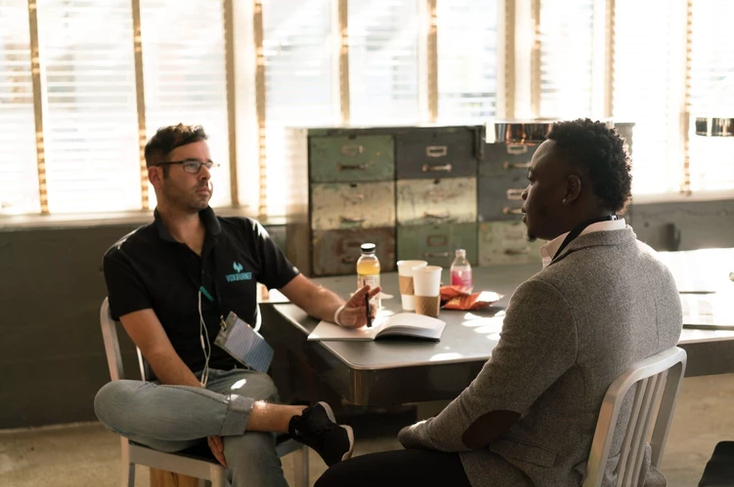5 Important Strategies for Achieving Your Goals
What are some of the most important components that are necessary to improve the likelihood of you meeting your goals? Most of us engage in goal setting at one point or another (including near January 1, when we refer to it as “New Year’s Resolutions”). Some set goals regularly. Unfortunately, too often people fall short of the targets they set for themselves. Why? Not necessarily because of a lack of determination, skill, or grit, but rather due to a failure to properly set themselves up for success. In my practice as a professional coach and consultant I work with all kinds of people, including organizational leaders, executives, and small business owners who tend to be highly effective individuals. However, many of them find it beneficial to rewind the goal setting process to square one in order to construct a sound template for hitting the bullseye they are aiming for. I use the following strategies with my clients and offer to share them with you, as well.
1) Clarifying Values
What are the principles that resonate most with you? For what concepts will you base significant decisions around? When coaching, I guide my clients in a deep-dive into first identifying, then defining, and finally rank-ordering their core values. This creates an anchor to which they can tether future actions. I also ask my clients to ascribe a name, or nickname, to their values. Doing so can create a memory link and increase the meaning of the values. For example, words such as “Rock”, “Compass”, or “Solid” can help people refer back to their values a bit more easily. Spending quality time and energy working with the values themselves is always worth the effort, because it provides the foundation by which a client can create meaningful outcomes and action steps forward.
2) Establishing Outcomes
This is the stage where I help my clients to articulate and specify their goals. Motivation comes into play here, as well. Specifically, I like to introduce an exercise which allows the client to explore the relationship between self and empathetic motivations. This has the effect of creating additional links to increase meaning both internally and externally by coaching the client to think in terms of how reaching the goal will have an impact on themselves, as well as on others. Conversely, I ask my clients to consider the implications of not achieving their goal. How would that result impact themselves and those around them? The power of visualization can be utilized here to help the client see themselves being successful, as imagining a favorable outcome is a positive precursor to achieving it.
3) Creating Action Steps
In this phase we get very specific about how the client will achieve the desired outcome, accessing their core values and keeping the end goal in view as they do. For example, if someone is interested in improving their health through a more consistent exercise regimen I will ask the client to tell me about the routine they already have (if there is one). We will then work backward in two different scenarios: one in which the result was successful and one in which the result was unsuccessful. I then ask the client what the turning point was which allowed them to follow through with the routine. Perhaps it was setting the exercise shoes near the front door the night before. Maybe it involved packing the gym bag immediately after eating breakfast. Whatever is was, it’s important to identify, highlight, and imbed it into the revised plan. Conversely, I also ask the client at what point the plan broke down. When was the decision made – in this case – to not exercise? Again, identifying that point is critical so we can then address ways to overcome it.
4) Setting Accountability
Building in accountability significantly increases the overall success rate of goal achievement. I prompt my clients to consider carefully those who could help them along the way by holding them accountable. Often, those closest to them are chosen (e.g. a spouse, close friend, etc.). As their coach, I am a part of this accountability cycle too because reporting out to me (i.e. “homework”) is typically how we begin every session. Occasionally a client will actually choose a future version of themselves as an accountability partner. This may seem, on the surface, ineffective. However, an individual may be sufficiently motivated to become a better version of themselves at some point in the future. That future self may even be expecting it. Regardless of who the accountability partners are, what is important is that the client must know others are aware of their goals so they may both report to and celebrate with those people.
5) Allowing for Revisions
Sometimes the action steps, or even the goals themselves, need to be revised. This is okay. Better to address something that isn’t working than continue with a plan that is doomed to fail. Usually I’ll take the client back to the action steps and review what parts are serving them well, and what parts are not. Think of it as the cycle of improvement: create, implement, review, improve, (repeat).
One of the key principles I share with my clients is that slow and steady wins the race. Just as in the classic story of the tortoise and the hare, the one who rushes the goal-setting process to get quick results is likely to end up tired, burned-out, and defeated (just like the rabbit!). Instead, I encourage my clients to methodically work through the process and stay committed for the long haul to win whatever race they have chosen to enter.
If you would like some help in achieving your goals with a trained, certificated, and professional coach I invite you to contact me for a complimentary 30-minute design session.
Chuck Sheron
Executive Leadership and Career Coach
Reimagine Success Coaching
www.reimaginesuccesscoaching.com
[email protected]






